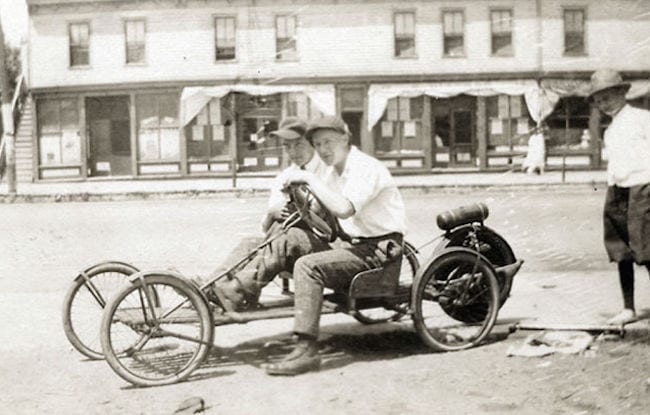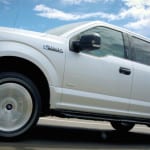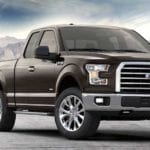When you’re shopping for a vehicle, it’s always a good idea to check out the most affordable vehicles on the market. While these vehicles have a lower price tag, they’re still usually dependable, and they often outshine their pricier rivals.
However, have you ever wondered what the most affordable vehicles of all time were? Thanks to Máté Petrány at Jalopnik.com, we now have our answer. Before you check out the best deal on new cars, check out some of the best deals of all time! It’s unlikely you’ll find these vehicles or deals anywhere online, but we can still appreciate the ludicrous prices!
2007 Kias: Free
No other vehicle on this list is as inexpensive, and we’re not going to see another vehicle ever top this price (unless a dealership decides to actually pay a customer to take a car). 2007 Kias could be had for free at any of the brand’s dealerships, but this deal required you to purchase a full-priced 2008 model. As Petrány notes, Subaru had a similar strategy back in the day with their 360, but we hadn’t seen such a deal in some time.
Kia’s 2007 models were generally well-regarded across the board. Many appreciated the Spectra’s variety of safety features, and they also commended the subcompact for its “sporty good looks” and dependable engine. The 2007 Optima was known for its driving capabilities and price, as the family sedan was one of the most affordable in the class. Pundits enjoyed the vehicle’s roomy interior and cargo space, and they also enjoyed the fuel efficiency of both the four-cylinder and V6 engine.
For comparison’s sake, both the 2008 Optima and Spectra received similar grades to their predecessors. That made Kia’s deal for a free 2007 model such a great bargain.
Tata Nano: $2,598
Produced by car manufacturer Tata Motors, the Tata Nano actually had an original price of only $1,500. The affordable value actually made the city car an instant hit when it was released in 2008, as India’s middle class (where the vehicle was generally marketed towards) was looking to shy away from two-wheelers.
Predictably, the two-cylinder petrol engine (with Bosch multi-point fuel injection) could only pump out 38 horsepower and 38 ft-lbs of torque. This resulted in underwhelming performance specs, like a 30-second 0-to-60 time and a max speed of 65 miles per hour. The four-speed manual transmission also made for quite the easy ride.
The Nano ultimately put up respectable sales numbers, having sold around 70,000 units per year. Unfortunately, this wasn’t close to what the brand had envisioned, as they originally believed their new vehicle would expand the nation’s car market by as much as 65-percent.
The second-generation Nano is expected to hit the United States in the coming months. While the original vehicle is not street legal in the country, the upcoming sedan is expected to be allowed. If you’d rather hold off for the original, you’ll have to wait until 2034, which is when the 2009 models are granted their 25-year exemption for the US Customs and Border Protection.
Negatives? Well, there were reports of several Nanos previously catching fire, although the company denied that the issue could be attributed to the vehicle’s design. Furthermore, the vehicle received a zero-star adult protection rating, failing to meet even the basic safety requirements.
Banner Boy Buckboard: $3,152
Not a whole lot is known about this specific vehicle, besides, of course, the very affordable price tag. Produced in the 1950s by Banner Welder Incorporated out of Milwaukee, Wisconsin, the vehicle was a take on the Shawmobile.
That Shawmobile was a two-seat buckboard vehicle, which was the passenger wagon usually featured on horse carriages. The 241-cc engine helped the vehicle get to a cruising speed of 20 mph and a top speed of 30 mph. Eventually, these engines were added to bikes in an attempt to convert them into motorcycles.
The Banner Boy Buckboard was eventually sold as the American Buckboard or the Bearcat. McDonough Power Equipment eventually took over production, producing their “Model 60” from the 1940s through the 1960s.
Eshelman ASC: $3,455
This tiny car resembles more of a go-kart than an actual vehicle. In fact, it doesn’t provide passengers with much space, as even your child may recognize that the sedan features barely any leg room.
The vehicle was produced in the 1950s by Cheston L. Eshelman Company, which had previously produced garden tractors, light aircrafts and pleasure boats. Eventually, the company decided to engineer an air-cooled, one-cylinder vehicle.
Their creation, ‘The Sports Car,’ was available in two versions. There was the “Child’s Sport Car” which was actually built for kids, featuring a two-horsepower Briggs and Stratton number-six engine. There was also the ‘Adult Sport Car,’ which featured an engine that could get up to 25 miles per hour. The tiny sedan also featured head and tail lamps (operated by batteries), comfortable upholstery and fabrics, and the company’s notable chrome “rocket” badge on the side. Furthermore, the vehicle was also advertised as delivering an incredible (especially for the time) 70 mile per gallon fuel efficiency.
A 1950s brochure made the vehicle actually sound like a reasonable, logical purchase:
“Ideal for short trips. When it’s too far to walk—to the shopping center, to the beach, to work—this little car is the perfect ‘runabout’. Even the children can use it about your property. It’s so easy to operate and sturdily built. Add an Eshelman trailer cart and it’s perfect for hauling and light delivery.”
Nowadays, we’d probably suggest avoiding this vehicle if you want to keep your head.
Zaporzhets: $3,551
These rear-wheel-drive vehicles were produced through the 1990s at the ZAZ factory in Soviet Ukraine. With an air-cooled rear engine and an affordable price tag, the vehicle was expected to transform into the “people’s car” of the country.
The ZAZ-968 model was perhaps the most popular of the brand’s vehicles, especially because of the sub-$4,000 MSRP. Produced from 1971 through 1980, the MeMZ 968 V4 engine could pump out only 40 horsepower, but customers were more focused on the eye-catching exterior design.
As the years went on, the vehicle received several safety upgrades, like a safer driving wheel and a plastic dashboard (as opposed to the original, potentially dangerous metal dashboard). Other changes eventually included a padded dashboard, an energy-absorbing steering column, head lights that met the international standards, and an anti-theft steering lock.
Morris Minor: $12,500
The Morris Minor may be pricier than several of our honorable mentions, but it still deserves a brief shout out. The British car was produced from the late 1940s through the early 1970s, and the brand was fairly popular in Europe, having sold 1,000,000 units through 1960.
However, the price for their Morris Minor ended up dooming the company. Following the company’s merger with British Leyland, executives quickly learned that they had been losing around $168 (in today’s money) for each vehicle they sold. That’s an incredible loss when added up over time! Some experts believe there were more than 1.6 million units sold over the length of the Morris Minor’s production. Even when giving the company a generous estimation of $100 lost per vehicle, you’re still looking at a loss of nearly 160 million dollars!
Honorable Mentions:
Ford Model T: $3,895
Peel P50: $4,420
Fiat 500 Topolino: $5,434
Daihatsu Ayla: $6,386










